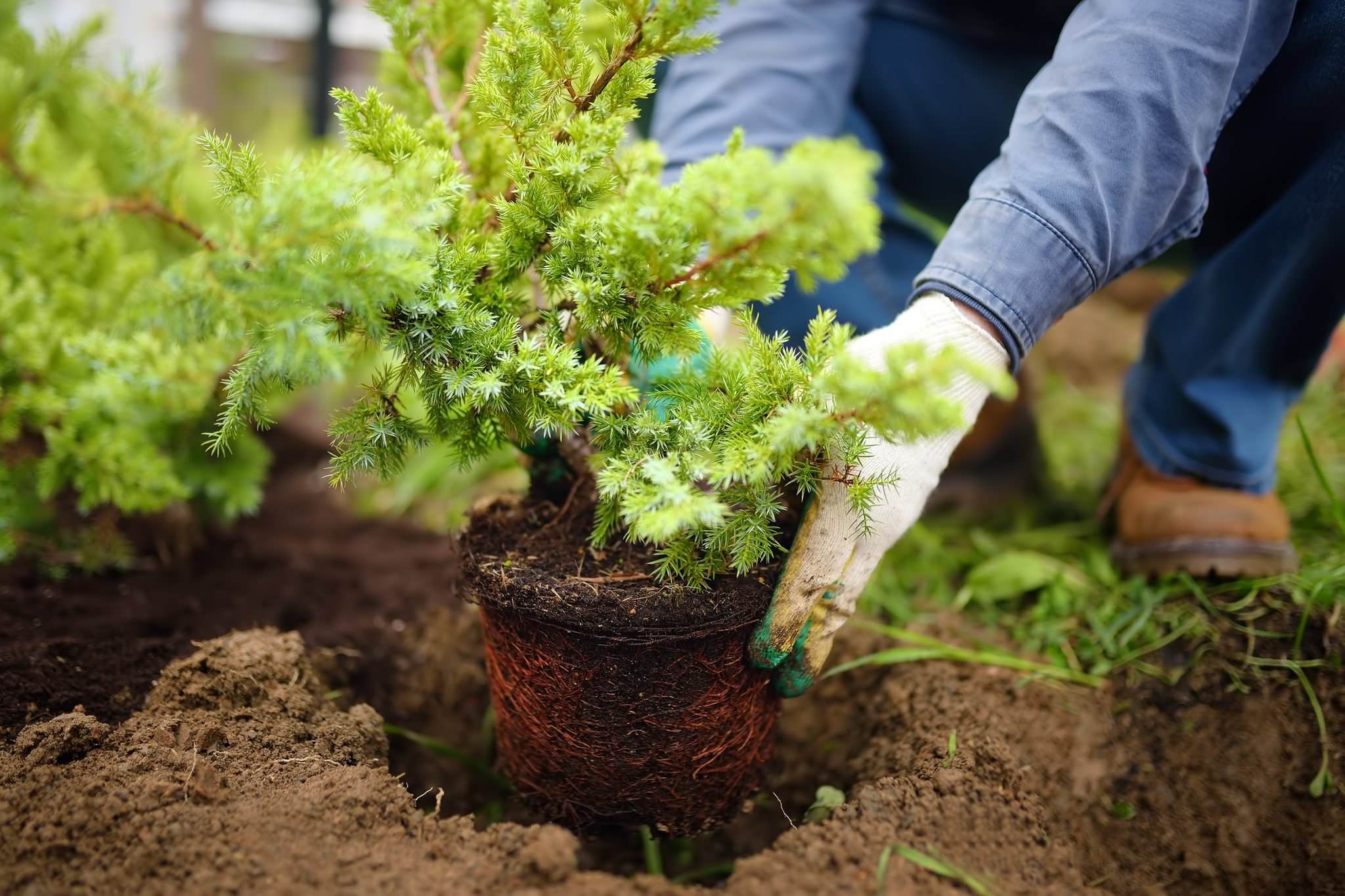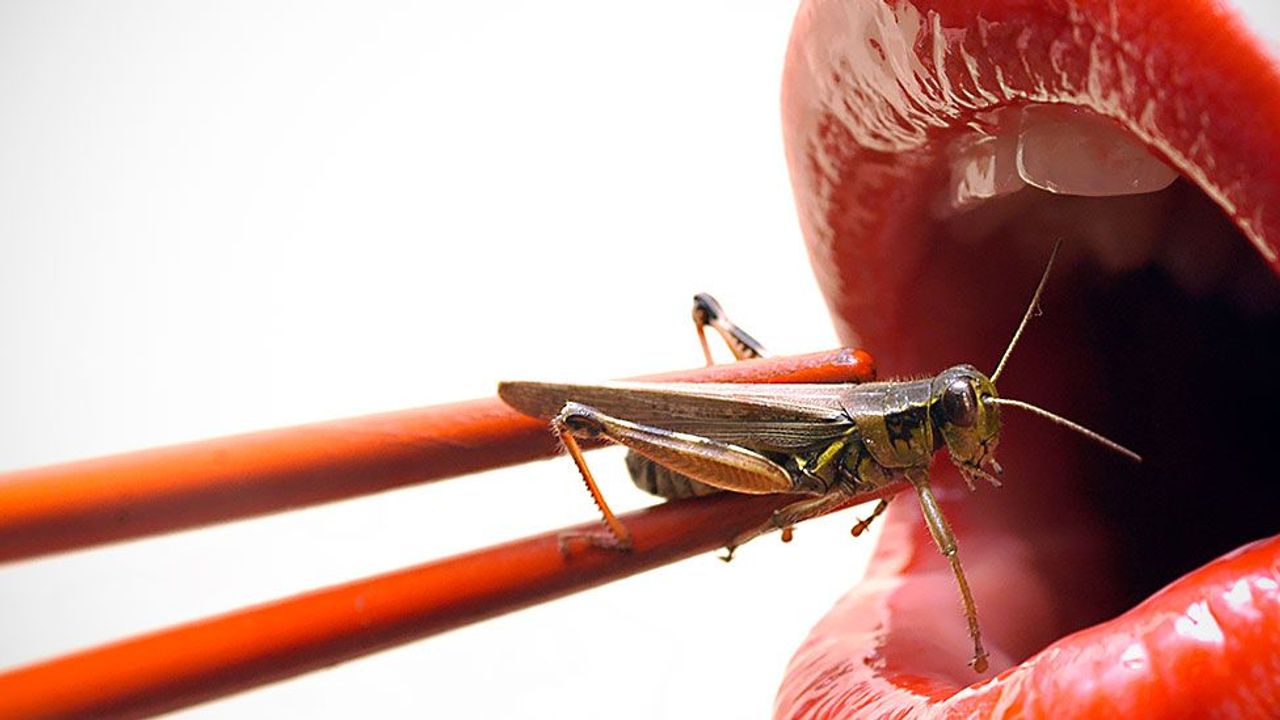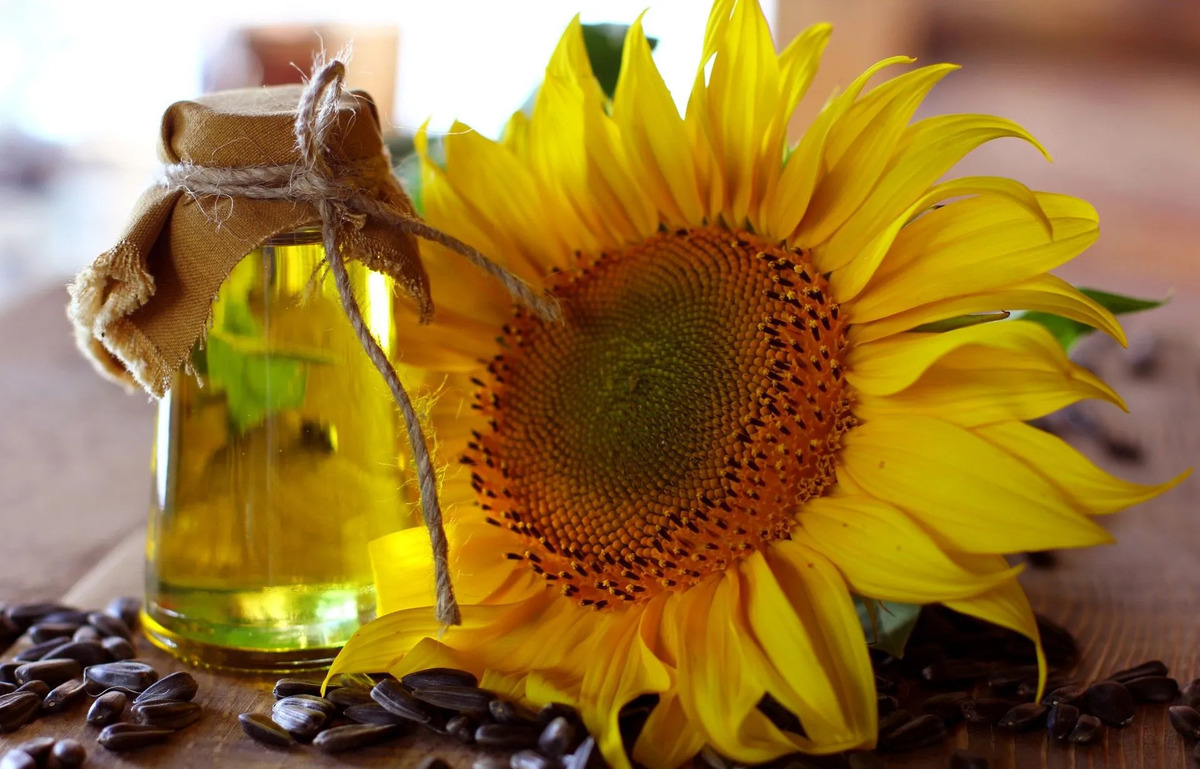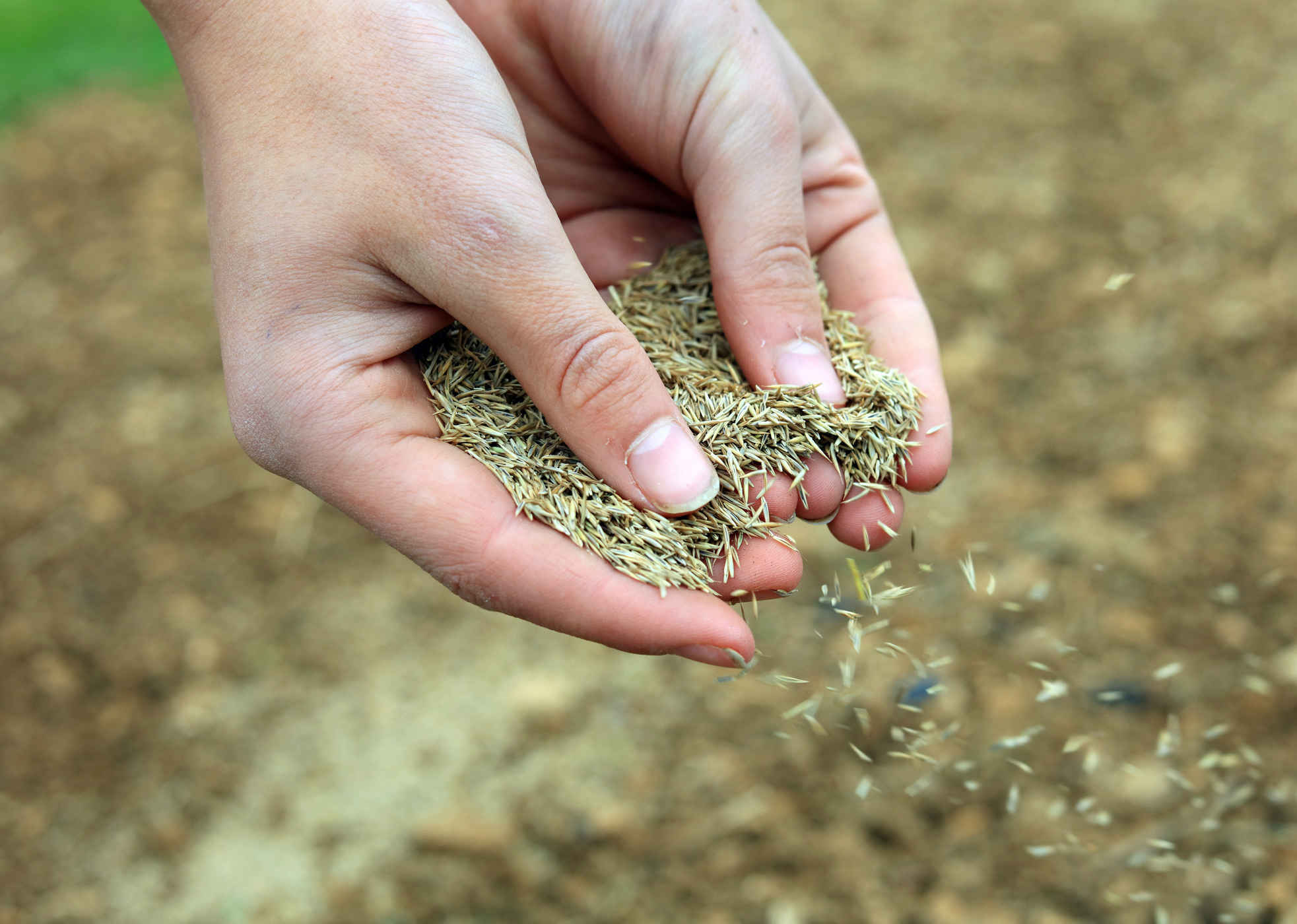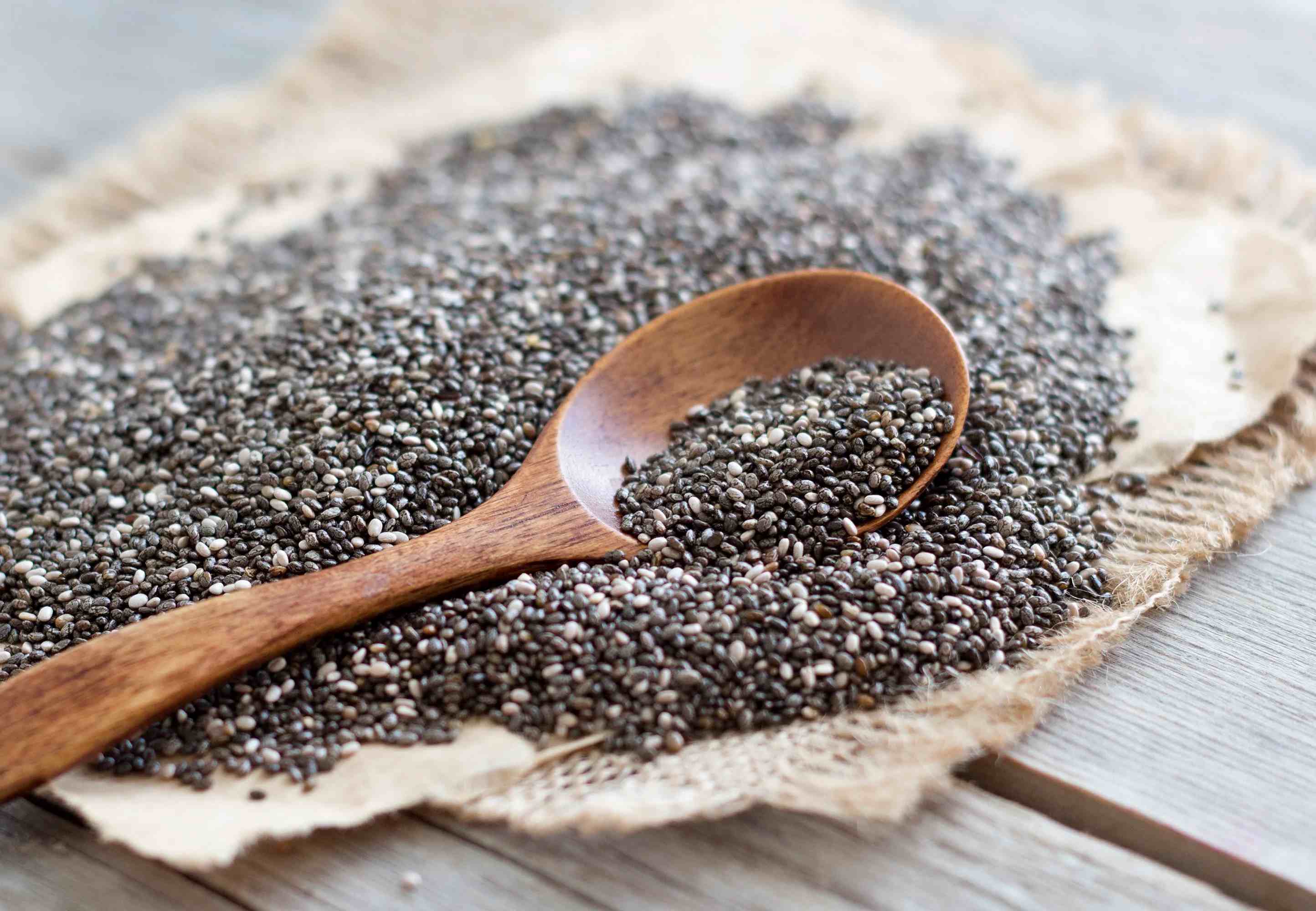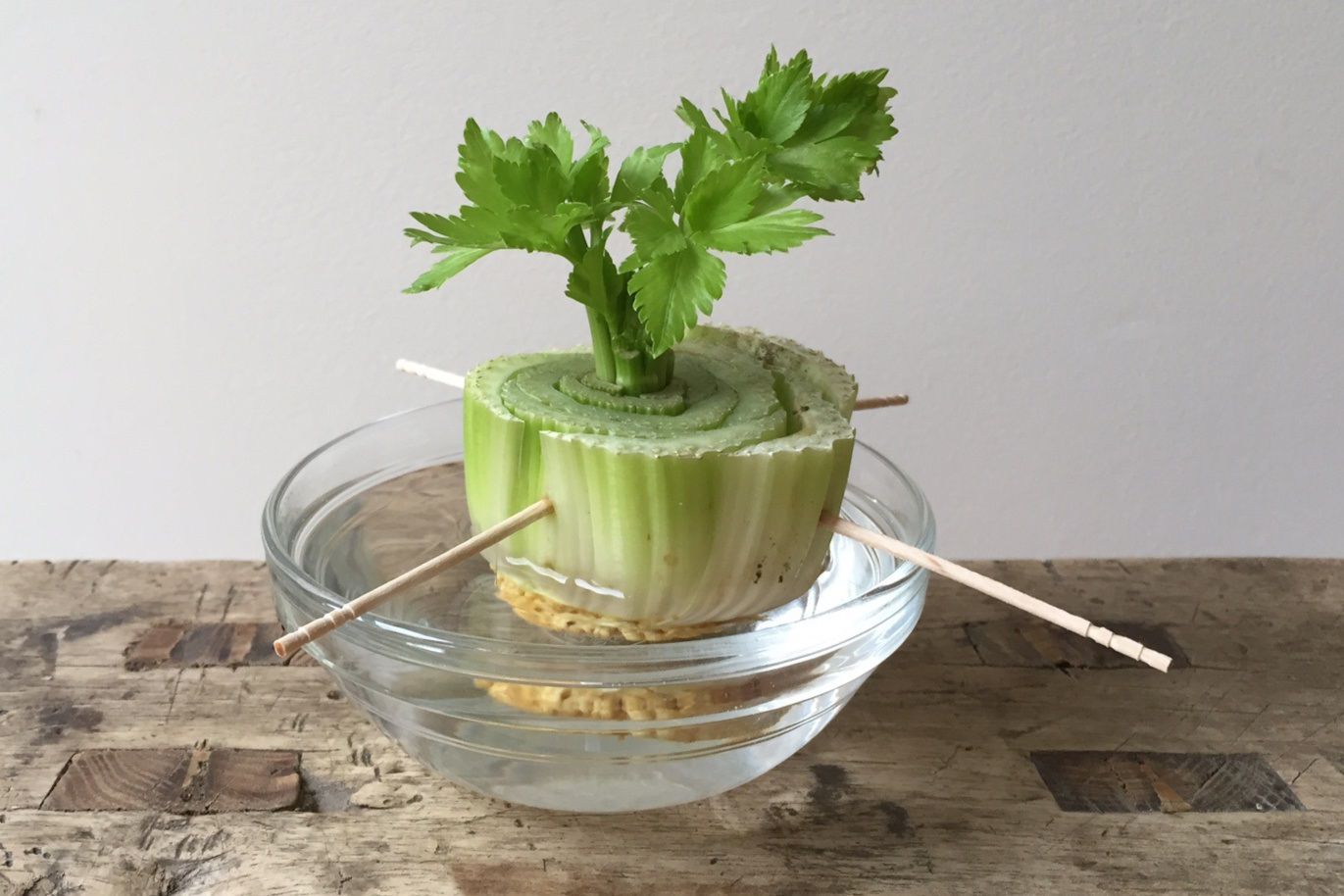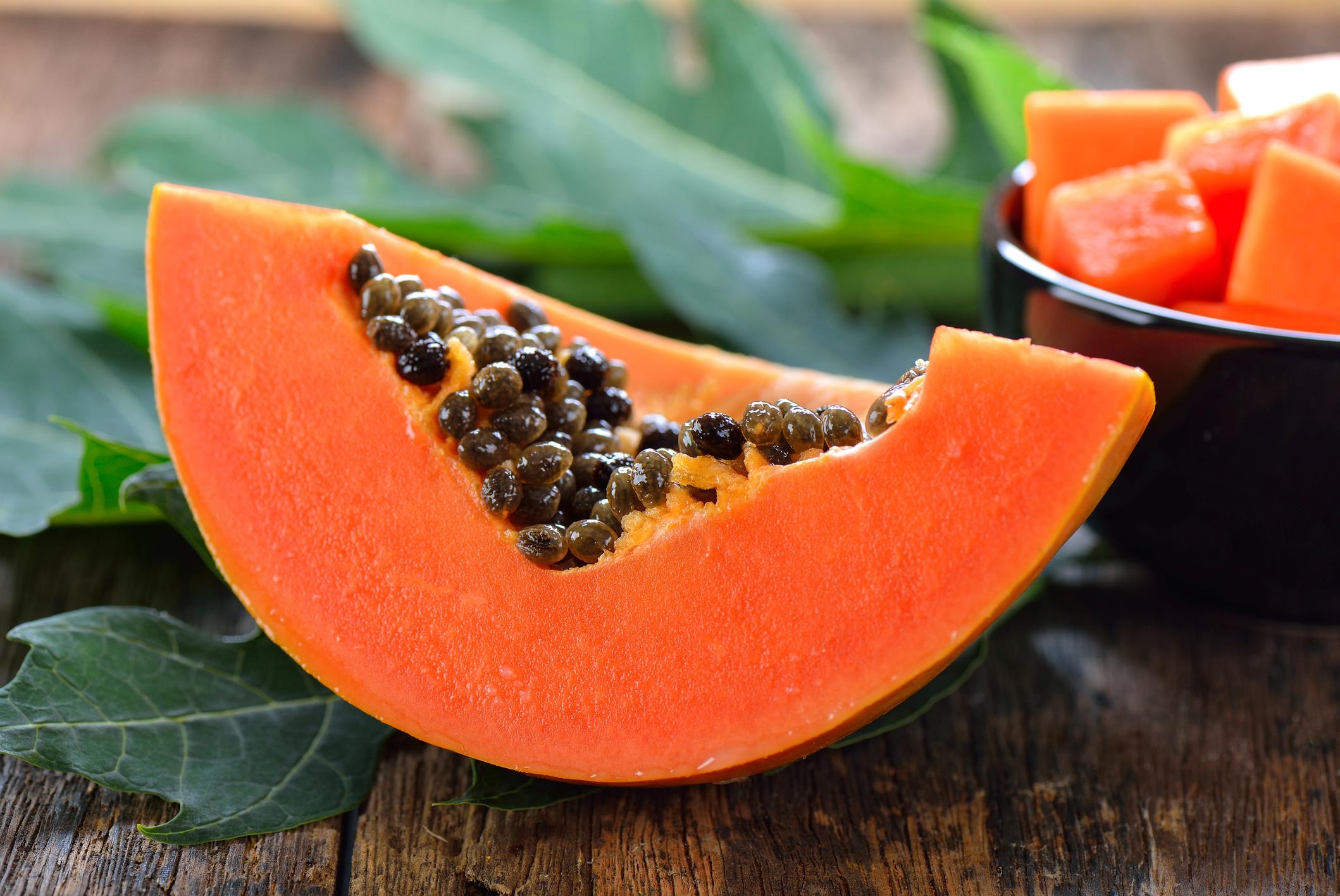Home>Gardening News and Trends>Gardening Trends>What Herbs Can You Plant With Basil
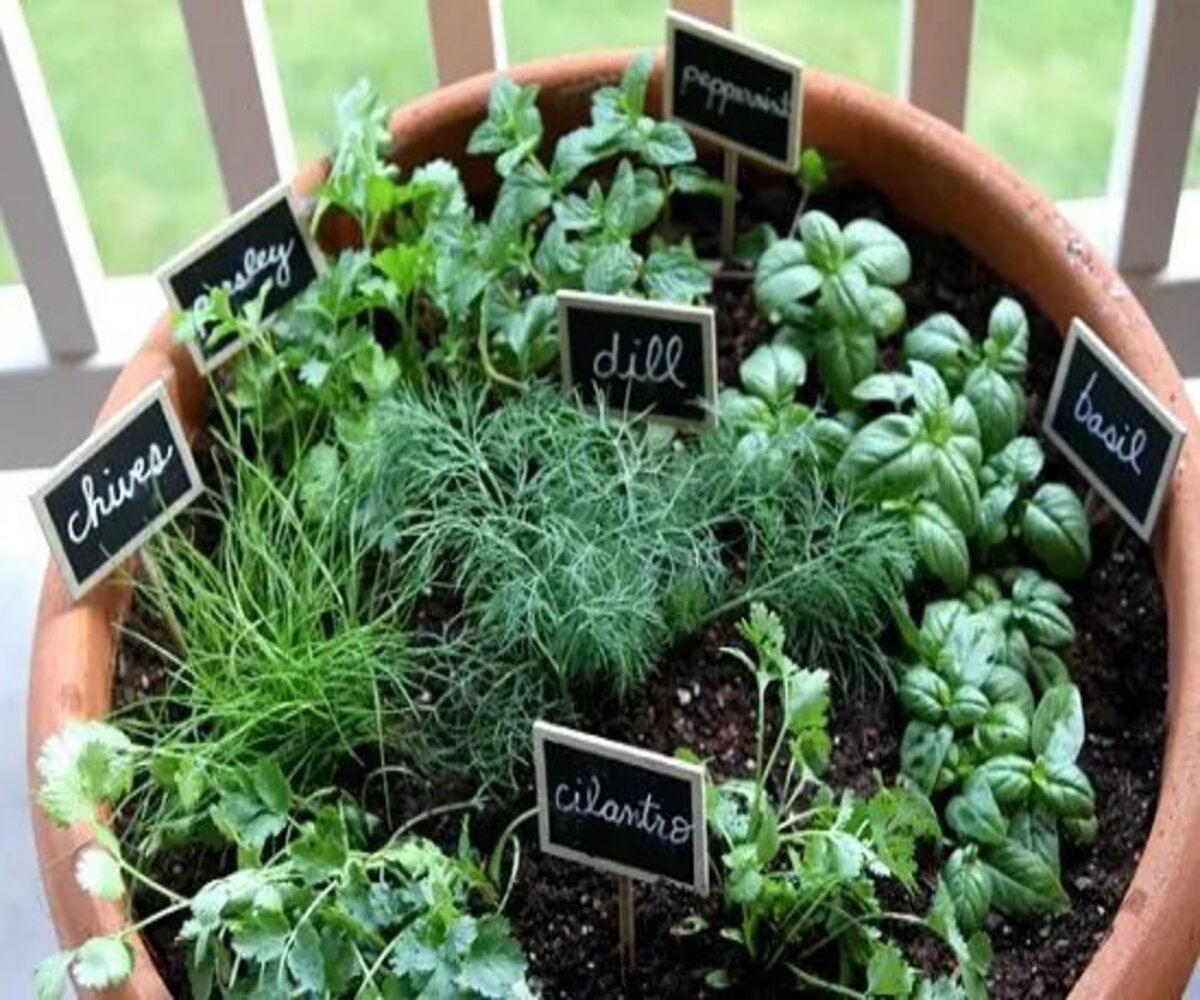

Gardening Trends
What Herbs Can You Plant With Basil
Modified: January 27, 2024
Discover the latest gardening trends and learn about the best herbs to plant alongside basil for a thriving garden. Enhance your gardening skills with these expert tips!
(Many of the links in this article redirect to a specific reviewed product. Your purchase of these products through affiliate links helps to generate commission for Chicagolandgardening.com, at no extra cost. Learn more)
Table of Contents
Introduction
When it comes to gardening, one of the most popular and versatile herbs to grow is basil. Not only does it add a delightful aroma and taste to dishes, but it also offers numerous health benefits. However, to optimize the growth and potential of your basil plants, it’s important to consider companion planting. Companion planting is the practice of strategically planting different herbs, flowers, or vegetables together to benefit one another and promote overall garden health. In this article, we will explore the best companion herbs for basil and how they can enhance its growth and flavor.
Companion planting with herbs not only helps deter pests but also assists in pollination and improves soil health. It creates a harmonious environment where different plants work together to thrive. Choosing the right companion herbs for basil can also enhance the aroma and flavor profiles of both the herbs when used in culinary endeavors. Whether you have a small herb garden or a larger vegetable patch, incorporating these companion herbs with your basil plants can make a noticeable difference in their growth and vitality.
In the following sections, we will delve into the top companion herbs for basil, discussing their specific benefits and how they complement each other. From the classic pairing of mint and basil to the aromatic duo of rosemary and basil, these companion herbs will not only elevate your gardening experience but also enhance the flavors and scents in your kitchen.
Companion Herbs for Basil
When it comes to companion planting with basil, there are several herbs that work exceptionally well together. These herbs not only help deter common pests, but they also complement each other in terms of growth habits, scent, and flavor. Let’s explore some of the top companion herbs for basil and how they can enhance your gardening experience:
-
Mint:
Mint is a classic companion herb for basil. Its strong aroma acts as a natural pest deterrent, keeping pests like aphids and ants away from your basil plants. Additionally, the cooling flavor of mint complements the sweet and slightly spicy taste of basil, making them a perfect pairing in salads, teas, and cocktails.
-
Rosemary:
Rosemary is another excellent companion herb for basil. It is known for its ability to repel insects, including mosquitoes and cabbage moths, which can damage basil plants. The woody and aromatic scent of rosemary adds depth to the fragrance of basil, creating a delightful sensory experience in your garden.
-
Thyme:
Thyme is a versatile herb that pairs well with basil. Its strong scent acts as a natural deterrent for pests such as whiteflies and cabbage worms. Thyme’s earthy and slightly minty flavor complements basil, enhancing the taste of pasta sauces, grilled vegetables, and roasted meats.
-
Oregano:
Oregano is a popular herb that not only thrives alongside basil but also enhances its flavor. Oregano’s pungent and slightly bitter taste adds depth to basil-based recipes such as pizzas, pasta sauces, and Mediterranean dishes. It also has natural anti-fungal properties, helping to protect basil plants from diseases.
-
Sage:
Sage is a versatile herb that pairs well with basil in both the garden and the kitchen. It acts as a natural pest repellent, protecting basil plants from pests like cabbage loopers and carrot flies. The earthy and slightly peppery flavor of sage complements basil in various recipes, including stuffings, stews, and sauces.
-
Parsley:
Parsley is not only a popular herb on its own but also makes a great companion for basil. Parsley’s mild and fresh flavor enhances the taste of basil in various dishes, including salads, soups, and marinades. As a bonus, parsley attracts beneficial insects like hoverflies and ladybugs, which help control pests in the garden.
-
Chives:
Chives are a member of the onion family and make an excellent companion for basil. Their onion-like scent repels pests like aphids and Japanese beetles, protecting basil plants from damage. Chives also add a mild onion flavor to dishes, complementing the aromatic and slightly sweet taste of basil.
-
Marjoram:
Marjoram is a herb that shares a similar flavor profile with basil, making them a natural pairing. Its sweet and citrusy taste complements the slightly spicy flavor of basil, enhancing dishes such as roasted vegetables, tomato-based sauces, and herb-infused oils. Marjoram also attracts beneficial pollinators, which promote the overall health of your garden.
-
Lavender:
Lavender is not only a beautiful flowering herb but also a beneficial companion for basil. Its strong aroma helps repel pests like aphids and whiteflies, safeguarding basil plants from infestations. The floral and slightly sweet taste of lavender adds a unique twist to basil-infused recipes like lemonade, ice cream, and baked goods.
-
Cilantro:
Cilantro, also known as coriander, is a compatible companion herb for basil. Its strong scent and slightly spicy flavor help deter beetles, aphids, and spider mites that can damage basil plants. Cilantro’s citrusy and herbal taste adds freshness to basil-based dishes, including salsas, salads, and Asian-inspired cuisine.
By planting these companion herbs alongside your basil, you can create a harmonious garden where the plants support and enhance each other’s growth. Not only will you enjoy healthier basil plants but also a richer and more diverse flavor palette in your culinary creations.
Mint
Mint is a popular companion herb for basil due to its versatility and natural pest-repellent properties. Its strong aroma acts as a deterrent for pests like aphids, ants, and mosquitoes, keeping them away from your basil plants. Mint’s refreshing and cooling flavor is a perfect complement to the sweet and slightly spicy taste of basil, making them an excellent combination in various dishes and beverages.
When planting mint alongside basil, it’s important to consider its invasive nature. Mint has a tendency to spread rapidly and can quickly take over your garden if not properly contained. To prevent this, it’s recommended to plant mint in a separate container or pot, sunk into the ground. This will allow you to enjoy the benefits of companion planting while keeping the mint’s growth in check.
In addition to its pest-repelling properties, mint can also attract beneficial pollinators like bees and butterflies to your garden. These pollinators help in the fertility and reproduction of plants, enhancing the overall health of your basil plants.
In the kitchen, the combination of mint and basil opens up a world of culinary possibilities. You can use this herb pairing to create refreshing salads, flavorful teas, and invigorating cocktails. The aromatic blend of mint and basil adds a delightful twist to classic dishes like Caprese salad, pesto, and fruit salads. You can also experiment with infusing water, lemonades, or even ice cream with this dynamic duo to tantalize your taste buds.
When pruning your mint plants, don’t forget to harvest the leaves for culinary use. Both the fresh leaves and dried mint can be used to add a burst of flavor to your dishes. Whether you’re making a mint-basil sauce for grilled meats or steeping the leaves in hot water for a soothing herbal tea, this combination is sure to elevate your culinary creations.
In summary, mint is an excellent companion herb for basil. It helps repel pests, attracts beneficial pollinators, and adds a refreshing flavor to your dishes. Just remember to contain the mint’s growth and enjoy the many culinary possibilities that arise from combining mint and basil in your kitchen.
Rosemary
Rosemary is a versatile and aromatic companion herb that pairs exceptionally well with basil in both the garden and the kitchen. Its strong and woody fragrance not only adds a pleasant scent to your garden but also acts as a natural deterrent for pests that can harm your basil plants.
Planting rosemary alongside basil can help repel insects like mosquitoes and cabbage moths, keeping your basil plants safe from infestations. The scent of rosemary also helps mask the aroma of basil and can confuse pests, further protecting your plants.
In terms of flavor combinations, rosemary and basil create a dynamic duo. The earthy and resinous flavor of rosemary complements the sweet and slightly spicy taste of basil, adding depth and complexity to your dishes. Together, they can enhance the flavors of roasted vegetables, grilled meats, and even homemade bread.
Not only does rosemary offer culinary benefits, but it can also attract beneficial insects to your garden. Bees are particularly attracted to the small blue flowers that bloom on rosemary plants, aiding in the pollination process and supporting the overall health of your garden ecosystem.
To make the most of this herb pairing, consider combining rosemary and basil in recipes like marinades, roasted potatoes, tomato sauces, and herb-infused olive oils. You can also bundle sprigs of rosemary and basil together to create aromatic herb bundles that can be used on the grill or added to soups and stews for a burst of flavor.
When pruning your rosemary plant, make sure to trim the woody stems and use the fresh leaves in your culinary endeavors. The dried leaves can also be used as a flavoring agent or as an aromatic addition to flower arrangements or potpourri.
In summary, rosemary is an excellent companion herb for basil. Its fragrance helps repel pests, and its unique flavor profile adds richness to your dishes. By planting rosemary alongside basil, you not only create a visually appealing and fragrant garden but also enhance your culinary creations with the delightful combination of these two herbs.
Thyme
Thyme is a versatile and aromatic companion herb that pairs exceptionally well with basil. Its strong scent not only adds a delightful aroma to your garden but also acts as a natural deterrent for pests that can harm your basil plants. Thyme’s earthy and slightly minty flavor also complements basil, adding depth and complexity to a variety of dishes.
Planting thyme alongside basil can help repel pests like whiteflies, cabbage worms, and aphids. These common garden pests can wreak havoc on basil plants, but the strong scent of thyme can deter them and protect your basil from infestations. Thyme’s natural antimicrobial properties may also help prevent diseases that can affect your basil plants.
In the kitchen, thyme and basil create a harmonious pairing that can elevate the flavors of many dishes. The earthy and slightly minty taste of thyme complements the sweet and slightly spicy flavor of basil, making them perfect companions in pasta sauces, grilled vegetables, and roasted meats. You can also infuse olive oil with thyme and basil to create a flavorful herb-infused oil for dressings and marinades.
Thyme is a perennial herb that is known to attract beneficial insects like bees and butterflies to your garden. These pollinators play a crucial role in the reproduction of plants, ensuring a healthy and abundant harvest. By planting thyme with basil, you not only enhance the growth and flavor of your basil plants but also support a thriving ecosystem in your garden.
When it comes to pruning your thyme plant, trim the woody stems and use the fresh leaves in your culinary creations. Thyme can be used both fresh and dried, adding a burst of flavor to your dishes. Its delightful aroma and versatility make it a valuable addition to any kitchen herb garden.
In summary, thyme is an excellent companion herb for basil. Its strong scent helps repel pests, and its earthy flavor enhances the taste of various dishes. By planting thyme alongside basil, you not only add visual and aromatic interest to your garden but also create a flavorful and thriving herb combination for your culinary endeavors.
Oregano
Oregano is a popular herb that not only pairs well with basil but also enhances its flavor and provides several benefits in companion planting. Oregano’s pungent, slightly bitter taste adds depth to basil-based recipes such as pizzas, pasta sauces, and Mediterranean dishes. In addition to its culinary benefits, oregano also has natural anti-fungal properties that can help protect basil plants from diseases.
When planted alongside basil, oregano acts as a natural pest repellent. It can deter pests like aphids, spider mites, and cabbage loopers, which can damage basil leaves and hinder their growth. By incorporating oregano in your herb garden, you create a more resilient environment for your basil plants.
Oregano is a low-maintenance herb that thrives in various growing conditions. It requires well-drained soil and prefers full sun, making it an excellent companion for basil, which has similar growing requirements. The combination of oregano and basil not only provides a visually pleasing contrast in the garden but also creates a symbiotic relationship that benefits both plants.
In addition to repelling pests and enhancing flavor, oregano can attract beneficial insects to your garden. Bees, butterflies, and other pollinators are attracted to the tiny flowers that bloom on oregano plants, aiding in the pollination of your basil plants and promoting their overall health and productivity.
Harvesting oregano leaves is simple and rewarding. You can prune the stems and use the fresh leaves in your cooking, or you can dry them for future use. Oregano is known for its strong flavor, so a little goes a long way. Pairing fresh oregano with basil in recipes like homemade tomato sauce, herb-infused oils, and herb-infused vinegars can take your culinary creations to the next level.
In summary, oregano is an excellent companion herb for basil. It adds depth to the flavor of basil-based dishes, repels pests, attracts beneficial insects, and provides natural protection against diseases. By planting oregano alongside basil in your herb garden, you not only create a visually appealing combination but also enhance the taste and health of both herbs.
Sage
Sage is a versatile herb that serves as an excellent companion for basil in both the garden and the kitchen. This aromatic herb not only enhances the flavor of basil-based dishes but also acts as a natural pest repellent, making it a valuable addition to your herb garden.
When planted alongside basil, sage acts as a deterrent for pests like cabbage loopers and carrot flies. Its strong scent confuses and repels these insects, protecting your basil plants from damage. By incorporating sage into your garden, you create a more robust and pest-resistant environment for your basil.
In the culinary realm, the earthy and slightly peppery flavor of sage complements the aromatic and slightly sweet taste of basil. Sage adds depth and complexity to dishes like stuffings, stews, and sauces. Whether you’re preparing a roasted vegetable medley or a flavorful pesto, the combination of sage and basil can take your culinary creations to new heights.
Sage is known for its medicinal properties and has been used for centuries in traditional medicine. It is believed to have anti-inflammatory and antioxidant benefits. Incorporating sage into your diet through the use of basil and sage recipes can provide not only enhanced flavor but also potential health benefits.
Sage is a hardy perennial herb that requires well-drained soil and plenty of sunlight, much like basil. When caring for your sage plant, it’s important to prune it regularly to encourage bushier growth and prevent it from becoming leggy. The fresh leaves can be used in cooking, or you can dry them for future use.
Adding sage to your herb garden not only enhances the growth and flavor of your basil but also attracts beneficial insects like bees and butterflies. These pollinators play a crucial role in plant reproduction, ensuring a healthy harvest and ecosystem in your garden.
When using sage and basil together, consider experimenting with different flavor combinations. Sage-infused olive oil can add a delightful twist to salads, while a sage and basil-infused syrup can elevate your cocktail game. Don’t be afraid to get creative in the kitchen and explore the multitude of possibilities that arise from this herb pairing.
In summary, sage is an excellent companion herb for basil. It repels pests, adds depth to culinary creations, and offers potential health benefits. By incorporating sage into your herb garden alongside basil, you create a symbiotic relationship that promotes the growth and flavor of both herbs, resulting in a more vibrant and flavorful garden.
Parsley
Parsley is not only a popular herb on its own but also makes an excellent companion for basil. Its mild and fresh flavor enhances the taste of basil in a variety of dishes, making it a valuable addition to your herb garden.
Planting parsley alongside basil offers several benefits. Firstly, parsley attracts beneficial insects such as hoverflies and ladybugs, which prey on common garden pests like aphids and mites. This can help protect your basil plants from infestations and promote a healthier garden ecosystem.
The combination of parsley and basil creates an appealing visual contrast in the garden as well. The vibrant green foliage of parsley pairs beautifully with the lush leaves of basil, adding visual interest and texture.
In the kitchen, parsley adds freshness and brightness to dishes containing basil. It complements the aromatic and slightly sweet taste of basil, enhancing the flavor of salads, soups, marinades, and sauces. Combining the two herbs in recipes like Caprese salad, pesto, or herb-infused oils can elevate the overall taste and appeal of your culinary creations.
Parsley is a biennial herb that prefers well-drained soil and plenty of sunlight, similar to basil. It is relatively easy to grow and can be harvested throughout the growing season. When harvesting parsley, trim the outer leaves and leave the inner ones to continue growing. This will allow the plant to regenerate and provide a continuous supply of fresh parsley leaves.
In addition to its flavor-enhancing properties, parsley is also a rich source of vitamins A, C, and K, as well as minerals like calcium and iron. By incorporating parsley into your diet through the use of basil and parsley recipes, you can boost the nutritional value of your meals.
Whether you’re savoring the delicate flavor of parsley leaves or incorporating it into your favorite basil dishes, parsley’s versatility and compatibility with basil make it a wonderful herb to have in your garden.
In summary, parsley is an excellent companion herb for basil. It attracts beneficial insects, enhances flavor, and provides an appealing visual contrast in the garden. By planting parsley alongside basil, you not only create a dynamic duo of herbs but also enhance the taste and health benefits of your culinary creations.
Chives
Chives, a member of the onion family, make an excellent companion herb for basil. Not only do they add flavor to your dishes, but they also act as a natural pest repellent for your basil plants.
The onion-like scent of chives helps deter pests such as aphids and Japanese beetles, which can cause damage to basil leaves. By planting chives alongside basil, you create a more resilient environment that protects your basil plants from infestations.
Chives not only serve as a pest repellent but also add a mild onion flavor to your culinary creations. The delicate and herbaceous taste of chives complements the aromatic and slightly sweet flavor of basil, enhancing dishes like salads, omelets, soups, and pasta.
In addition to their flavor benefits, chives can attract beneficial insects to your garden. Bees and butterflies are particularly attracted to the delicate purple flowers that bloom on chive plants, aiding in the pollination process and supporting the overall health of your garden ecosystem.
Chives are a low-maintenance herb that can be easily grown alongside basil. They prefer well-drained soil and full sun, similar to basil’s growing requirements. Regular cutting or harvesting of chives encourages new growth and ensures a continuous supply of fresh leaves for your culinary creations.
When using chives and basil together in recipes, consider experimenting with different combinations. Chopped chives can be sprinkled over pesto, added to compound butters, or incorporated into creamy salad dressings. The possibilities are endless, and the addition of chives can elevate the flavors of your basil-based dishes.
Additionally, chives can be propagated easily. You can divide existing chive clumps and replant them in separate areas of your garden or in containers. This allows you to expand your chive supply and continue enjoying the benefits of this versatile herb companion for your basil.
In summary, chives are an excellent companion herb for basil. They help repel pests, add a mild onion flavor to dishes, and attract beneficial insects to your garden. By planting chives alongside basil, you create a harmonious herb combination that enhances the taste of your culinary creations while promoting a healthy garden ecosystem.
Marjoram
Marjoram, a close relative of oregano, is a compatible companion herb for basil that offers a unique flavor profile and several benefits in the garden. Its sweet and citrusy taste complements the slightly spicy flavor of basil, making them a natural pairing.
When planted alongside basil, marjoram not only enhances the taste of your culinary dishes but also helps attract beneficial pollinators to your garden. Bees, butterflies, and other pollinating insects are attracted to the small flowers that bloom on marjoram plants, aiding in the reproduction of your basil and promoting a healthy garden ecosystem.
Marjoram also offers potential health benefits. It is known for its antioxidant properties and may help support a healthy immune system. By incorporating marjoram into your diet through the use of basil and marjoram recipes, you can enjoy its unique flavor profile and potential health benefits.
In the garden, marjoram can act as a natural pest repellent. Its strong scent can help deter pests like aphids and spider mites, protecting your basil plants from infestations. Planting marjoram alongside basil creates a harmonious environment that promotes plant health and reduces the likelihood of pest damage.
Marjoram is relatively easy to grow and requires well-drained soil and plenty of sunlight. It can be grown alongside basil and other herbs in containers or directly in the ground. Regular pruning of marjoram plants encourages bushier growth and increases the yield of fresh leaves.
When using marjoram and basil together in recipes, you can explore the multitude of flavor combinations they offer. Infuse olive oil with marjoram and basil for a fragrant dressing, combine them in herb butter for grilled seafood, or add them to tomato-based sauces for a burst of flavor. The sweet and citrusy taste of marjoram complements the aromatic and slightly spicy flavor of basil, creating a well-balanced and memorable culinary experience.
In summary, marjoram is a delightful companion herb for basil. Its sweet and citrusy flavor enhances the taste of basil-based dishes, while its strong scent helps repel pests and attract beneficial pollinators to your garden. By planting marjoram alongside basil, you not only create a harmonious herb combination, but also enjoy the unique flavors, potential health benefits, and natural pest-repelling properties that marjoram offers.
Lavender
Lavender is a beautiful flowering herb that not only adds visual appeal to your garden but also serves as a beneficial companion for basil. Its strong and soothing aroma not only delights the senses but also acts as a natural deterrent for pests that can harm your basil plants.
Planting lavender alongside basil can help repel pests like aphids and whiteflies. The fragrance of lavender masks the scent of basil, making it difficult for pests to locate and infest your plants. This natural pest-repellent quality of lavender helps protect your basil plants and promote their overall health.
In addition to its pest-repelling properties, lavender can attract beneficial insects to your garden. Bees and butterflies are particularly drawn to the vibrant purple flowers of lavender, contributing to the pollination process and supporting the health of your garden ecosystem.
Lavender’s unique and floral flavor can add a delightful twist to dishes that contain basil. Pairing lavender with basil in recipes like lemonade, ice cream, and baked goods can create a truly memorable culinary experience. The combination of the two herbs offers an aromatic and flavorful balance that elevates your dishes to new heights.
Growing lavender alongside basil requires well-drained soil and full sun, which are also ideal conditions for basil. Both herbs thrive in similar environments and can be planted together in the garden or in containers. Regular pruning of lavender plants helps maintain their shape and promotes bushier growth.
Harvesting lavender can be done while the flowers are in bloom. Cut the flowers when they have fully opened but before they start to wither. These flowers can be used fresh in culinary creations or dried for later use in teas, sachets, or potpourri.
In summary, lavender is an excellent companion herb for basil. Its fragrance acts as a natural pest repellent, attracting beneficial insects, and enhancing the flavors of basil-based dishes. By planting lavender alongside basil, you create a visually stunning garden while enjoying the benefits of this versatile and aromatic herb combination.
Cilantro
Cilantro, also known as coriander, is a compatible companion herb for basil that adds a fresh and citrusy flavor to your culinary creations. Its vibrant green leaves and unique taste make it a valuable addition to your herb garden alongside basil.
When planted together, cilantro can help enhance the growth and flavor of basil. Both herbs have similar growing requirements, preferring well-drained soil and full sun. Their compatibility allows them to thrive side by side, creating a visually appealing and flavorful combination.
Cilantro also offers pest-repellent properties that can benefit your basil plants. It can deter beetles, aphids, and spider mites, which often pose a threat to basil leaves. By planting cilantro alongside basil, you create a more resilient environment that protects your basil from common garden pests.
In the kitchen, the fresh and citrusy taste of cilantro complements the aromatic and slightly spicy flavor of basil. This herb pairing is especially popular in Latin American, Asian, and Middle Eastern cuisines. Incorporate cilantro and basil into recipes like salsas, salads, curries, and stir-fries to add a burst of fresh flavor.
Cilantro attracts beneficial insects to your garden, such as hoverflies and ladybugs, which help control pests. Additionally, cilantro plants produce small white flowers that provide nectar for pollinators like bees and butterflies, contributing to a healthy and vibrant garden ecosystem.
When harvesting cilantro, you can cut the outer leaves as needed, leaving the inner ones to continue growing. Cilantro leaves are best when used fresh, as their flavor deteriorates quickly after harvesting. However, if you have an abundance of cilantro, you can preserve it by freezing the leaves for later use.
In summary, cilantro is a fantastic companion herb for basil. Its citrusy and fresh flavor enhances the taste of basil-based dishes, while its pest-repellent properties help protect your basil plants. By planting cilantro alongside basil, you not only create an attractive and flavorful herb combination but also contribute to the overall health and vitality of your garden ecosystem.
Conclusion
Companion planting with herbs is a great way to enhance the growth, flavor, and pest resistance of your basil plants. By strategically planting companion herbs alongside basil, you can create a harmonious garden environment that benefits both the plants and your culinary creations. We have explored ten companion herbs that work exceptionally well with basil, each offering unique qualities and benefits.
From the classic pairing of mint and basil to the aromatic combination of rosemary and basil, these companion herbs enhance the flavors and scents in your garden and kitchen. Mint acts as a natural pest deterrent, while rosemary adds a woody depth to basil-based dishes. Thyme’s earthiness and oregano’s pungency complement basil’s spiciness, and sage brings a mild onion-like flavor to the mix. Parsley adds freshness, chives offer a mild onion taste, and marjoram adds a sweet, citrusy zest. Lavender adds a delightful floral twist to basil-infused recipes, and cilantro contributes a fresh and citrusy flavor.
Aside from flavor enhancement, companion herbs bring additional benefits to your garden. They can repel pests, attract beneficial insects like bees and butterflies, and offer aroma-therapeutic qualities. Additionally, some companion herbs provide potential health benefits due to their medicinal properties.
When planting companion herbs alongside basil, consider their specific growing requirements, such as soil type, sunlight, and water needs. Be mindful of the growth habits of certain herbs, like mint, and ensure they are properly contained to prevent them from overtaking your garden.
Incorporating these companion herbs into your herb garden not only creates an aesthetically pleasing combination of flavors and scents but also supports a healthy and thriving ecosystem. Experiment with different herb pairings and explore the abundant culinary possibilities that arise from the thoughtful integration of these herbs.
So, whether you’re a seasoned gardener or just starting out, consider planting these companion herbs alongside your beloved basil. Your garden will flourish, your culinary creations will be elevated, and you’ll enjoy the many benefits of these herb combinations for years to come.


